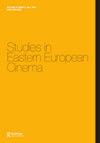IF 0.4
0 FILM, RADIO, TELEVISION
引用次数: 0
摘要
艾丽西娅·赫尔曼于2021年2月24日在安达卢西亚的托里维耶哈去世,她和丈夫在那里度过了生命的最后四年。随着她的去世,波兰电影研究的一个特定时代结束了。我是在20世纪80年代中期认识她的。那时,我的学术生涯才刚刚开始,而赫尔曼(大家都叫他“阿莉恰”)已经是波兰电影研究领域的杰出人物,他写了许多关于电影理论的书籍和文章,定期在当时最负盛名的波兰电影杂志《基诺》上发表。我喜欢她思考电影的方式,并试图给我的第一篇关于电影的文章以类似的形式,因此我想让她指导我的博士论文。我的朋友碰巧认识阿莉莎,我请她把我最近的成就递给她,那是一篇关于电影叙述者的长约5万字的打字稿。我等她回来等了好几个月,对我来说好像等了很久,但最重要的是,她的反应很好。Alicja同意指导我的博士学位;后来她还审核了我的康复工作。与此同时,我们成了亲密的同事,甚至可能是朋友。毫无疑问,如果没有她,我的职业生涯将会大不相同。这是我的故事,但如果稍作改动,它可能是许多与我在波兰的职业环境相似的人的故事。阿莉恰对波兰电影研究产生了巨大的影响。她的职业生涯与这一学科在波兰和其他地方的动态发展重叠。1955年,当她开始在波兰科学院艺术研究所工作时,这门学科还是个新生事物,只有Jerzy Toeplitz等几位教授代表。现在,数百名波兰学者对各种形式的动态图像进行研究,很难找到一个高等教育机构,其人文或社会科学部门不进行这类研究。诚然,如果没有阿莉莎,这一切可能也会发生,因为这就是时代精神,但由于她的巨大贡献和她的条件,这一切确实发生了。在很长一段时间里,没有她的参与,波兰电影研究中任何重要的事情都不可能发生,无论是会议、出版物还是个人事业的开始。在20世纪80年代和90年代,几乎所有年轻的波兰电影研究人员都经过她的手。指导和审阅博士论文和康复论文。不久前,艾丽西娅自己给我讲了一个故事。一位第一次见到她的年轻学生惊呼道:“哇,我看到了一座波兰电影研究的纪念碑。”这句话很可能是对赫尔曼的崇高地位的最高赞赏,对她来说更是有点矛盾(尽管她讲起这个故事来很有趣),这是非常真实的。阿莉恰·赫尔曼过去是、现在是、将来也将是波兰电影研究中的不朽人物。阿丽嘉是一个传奇的勤奋人,她的许多活动可以很容易地分配给几个人,留给她的继任者和朝贡一个惊人的任务。也许是出于谦虚,也许是没有时间,也许是由于其他一些未知的原因,她不愿意将她的出版物编入目录。据我所知,她并没有把自己的作品列出来,这在学术界是非常罕见的,因为学术界的态度是“要么发表,要么灭亡”。这给想知道Alicja出版了多少书和文章的人带来了问题。很多,当然,但它到底是什么意思?唯一可靠的来源本文章由计算机程序翻译,如有差异,请以英文原文为准。
Alicja Helman (1935–2021)
Alicja Helman passed away on February 24th 2021 in Torrivieja, Andalusia, where she had lived with her husband for the last four years of her life. With her demise a certain epoch in Polish film studies has ended. I met her in the mid-1980s. My academic career was just beginning, whereas Helman, widely known simply as ‘Alicja’ was already a distinguished figure in the Polish film studies, author of many books and essays on film theory published regularly in the most prestigious Polish film magazine of the time, Kino. I liked her way of thinking about cinema and tried to give my first writings on film a similar shape, therefore I wanted her to supervise my doctoral thesis. I asked my friend, who happened to know Alicja, to pass her my most recent achievement, a long, around 50.000 words typescript on the filmic narrator. I waited for her to come back to me for several months, which seemed to me like ages, but, most importantly, her reaction was favourable. Alicja agreed to supervise my PhD; later she also reviewed my habilitation work. In the meantime, we became close colleagues, perhaps even friends. Beyond doubt my professional life would have been very different without her. This is my story, but with some minor alterations it could have been a story of many people from my professional milieu in Poland. Alicja exerted an enormous influence on Polish film studies. The time of her professional career overlapped with a dynamic growth of this academic discipline, both in Poland and elsewhere. When she started her work at the Institute of Art of the Polish Academy of Sciences in 1955, this discipline was a novelty, represented by a handful of professors, such as Jerzy Toeplitz. Now, several hundred Polish academics carry on research on various forms of moving images, and it would be difficult to find an institution of higher education, with departments of humanities or social sciences which does not conduct this kind of research. Admittedly, it probably would have happened without Alicja, for such was the zeitgeist, but it did happen with her enormous contribution and on her terms. For a long time nothing significant in Polish film studies could have happened without her involvement, be it conferences publications or launching of individual careers. In the 1980s and the 1990s practically all young Polish film studies researchers passed through her hands. She supervised and reviewed doctoral dissertations and habilitation theses. Some time ago Alicja herself told me a story. A young student meeting her for the first time exclaimed: ‘Wow, I can see a monument to Polish films studies’. This statement, probably a sign of the highest appreciation for Helman’s elevated position, and more than slightly ambivalent for her (although she told the story with amusement), was very true. Alicja Helman was, is and will remain a monumental figure in the Polish films studies. Alicja, a person of legendary diligence, whose numerous activities could be easily distributed among several people, left her successors and tributaries a surprising task. Either out of modesty, or of lack of time, or perhaps due to some other, unknown reasons, she was reluctant to catalogue her publications. To my knowledge, she didn’t make a list of her works, which in the world of academia, with its ‘publish or perish’ attitude, is very rare. This brings about problems to anyone who would like to know how many books and articles Alicja has published. A lot, for sure, but what does it mean exactly? The only reliable source
求助全文
通过发布文献求助,成功后即可免费获取论文全文。
去求助
来源期刊

Studies in Eastern European Cinema
Arts and Humanities-Visual Arts and Performing Arts
CiteScore
0.50
自引率
0.00%
发文量
34
 求助内容:
求助内容: 应助结果提醒方式:
应助结果提醒方式:


